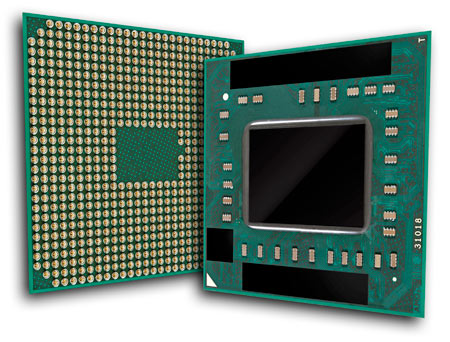AMD A10-4600M Review: Mobile Trinity Gets Tested
AMD steps up to the plate with an all-new processor. Armed with the updated Piledriver CPU core and VLIW4 graphics architecture, the Trinity APU represents an impressive improvement over the Llano generation. But can it stand up to Intel's best efforts?
AMD’s Next APU: Trinity
AMD launched its Llano-based desktop APUs almost one year ago, and we reviewed the then-flagship in AMD A8-3850 Review: Llano Rocks Entry-Level Desktops. While the term “desktop-class” is useful to imply a certain expectation of performance, this product shines brightest in a laptop. We’re still impressed with its powerful integrated graphics engine and excellent battery life, and we don’t doubt that Llano is one of the reasons AMD is capturing notebook market share from Intel.
When you look at the breakdown since 2011, though, the change isn’t as dramatic as you might think: according to IDC, AMD powered about 16 percent of all laptops sold over the last year, representing an increase of about 2.5% since the APU’s introduction. Intel continues to dominate, with about 84% of the mobile segment. Of the 564 laptop models for sale on Newegg, 108 are AMD-based (19%) and 456 employ Intel platforms (81%). If Llano is so great, why hasn’t it captured a greater number of sales?
Clearly, the APU initiative is gaining momentum in the mobile marketplace. However, it takes time to change the status quo and compel changes in the way software is written—we saw the same resistance when single-core CPUs started giving way to two- and four-core designs. Aside from that, Llano’s weakness is the performance of its x86 cores. Intel simply outmaneuvers AMD in a great many real-world benchmarks. To reiterate the final sentence of our Llano review: “…we’ll have to wait for Trinity to see if AMD can come up with an APU that can simultaneously challenge Intel’s processing capabilities as it wipes the floor with its on-die graphics. A no-compromise part would almost certainly guarantee more success than the give-and-take that is Llano.”
Well, the wait is over. Trinity is here today, and while we expect that it’ll maintain a lead over Intel’s best effort in the graphics department, we’re most curious to see how AMD improved the performance of its x86 cores. Trinity’s CPU architecture centers on Piledriver, the follow-up to the FX family’s maligned Bulldozer design. As we discovered in AMD Bulldozer Review: FX-8150 Gets Tested, the company’s theoretically-sensible module concept came up short against Sandy Bridge-based chips, which have since been replaced by Ivy Bridge. Already knowing some of the steps AMD planned to take in improving Bulldozer, it seems unlikely that it’ll make up the difference between Intel’s most recent efforts.
When we attended the Trinity Tech Day in Austin last month, AMD provided a different perspective, though. Naturally, the company’s message is going to be spun in such a way to make its deficiencies seem less impactful. But this author still saw sense in what the AMD’s marketing representatives were saying: benchmarks don’t tell the whole story.
Now, it’s no surprise that the company selling the processors that struggle to keep up with the competition in many of the tests we run would say this sort of thing. And I certainly don’t buy in to the suggestion that objective data comparisons aren’t important; they should always be at the heart of every good review. But I did take a few thoughts away from the presentation: first, if a feature isn’t benchmarkable in the traditional sense, it may not get much attention, no matter how impactful it might be. Second, it’s probably a good idea to consider how people spend their time on computers when we draw conclusions for a review.
I think that both of those are ideas that any hardware reviewer can adopt. They’re certainly not biased toward a specific manufacturer, and we’ll see if AMD’s message helps or hinders its newest APU in our conclusion.
Get Tom's Hardware's best news and in-depth reviews, straight to your inbox.
Now, let’s have a closer look at the hardware you’re probably most interested in: AMD’s new Piledriver-based cores.
Current page: AMD’s Next APU: Trinity
Next Page The CPU Side: An All-New Piledriver CoreDon Woligroski was a former senior hardware editor for Tom's Hardware. He has covered a wide range of PC hardware topics, including CPUs, GPUs, system building, and emerging technologies.
